Pietro's Castle
Introduction
Text-to-speech Audio
Images
Pietro's Castle, ca. 1965
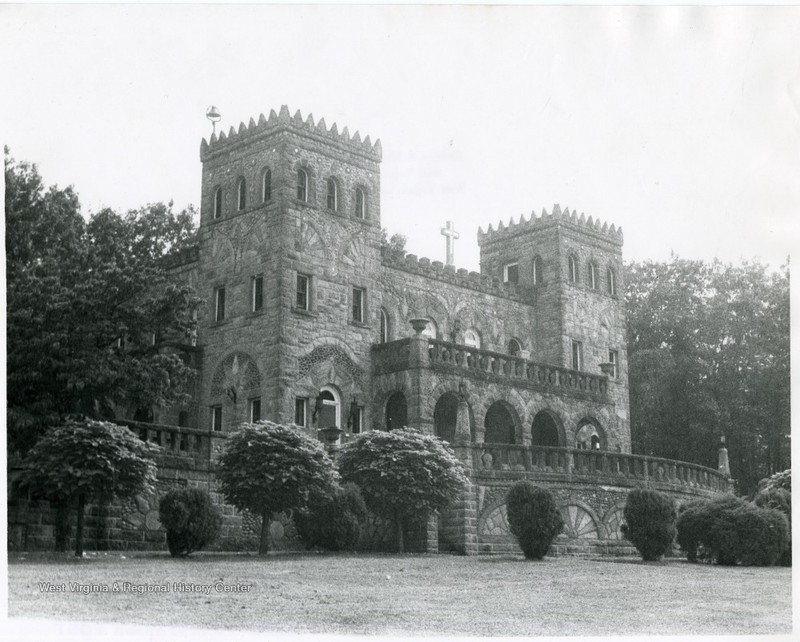
East side of the castle with garage visible
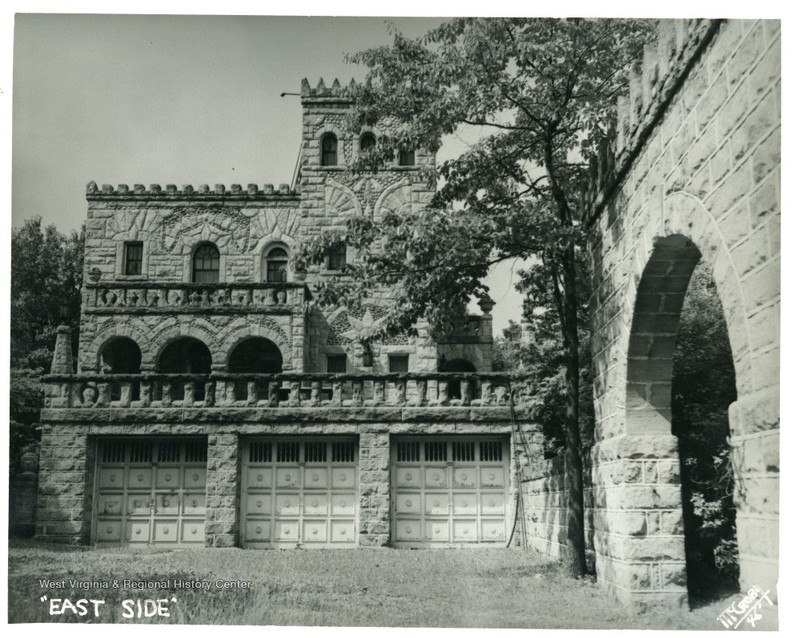
Club room
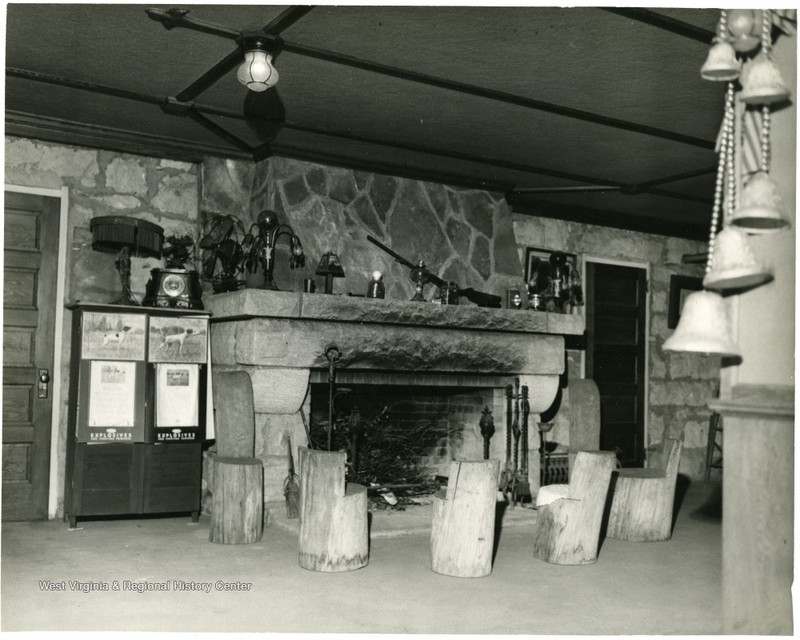
Interior view
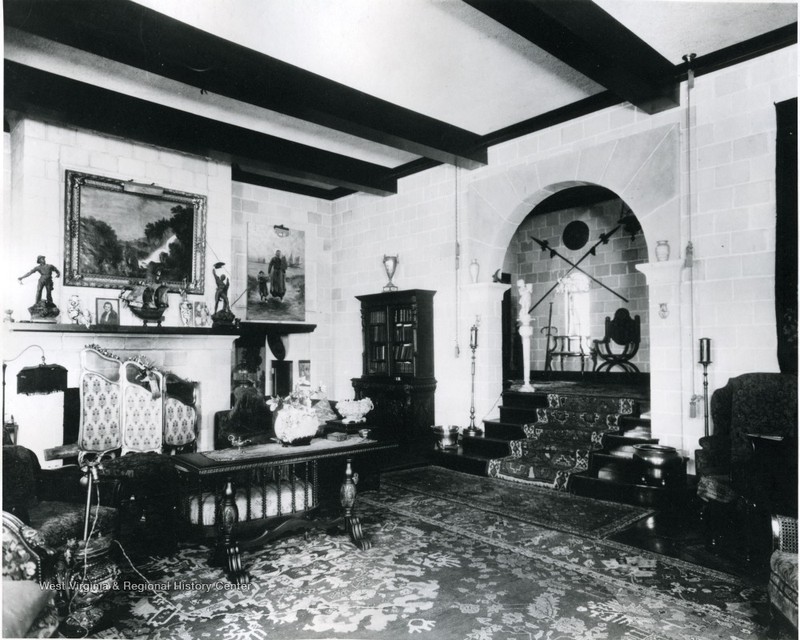
The castle today
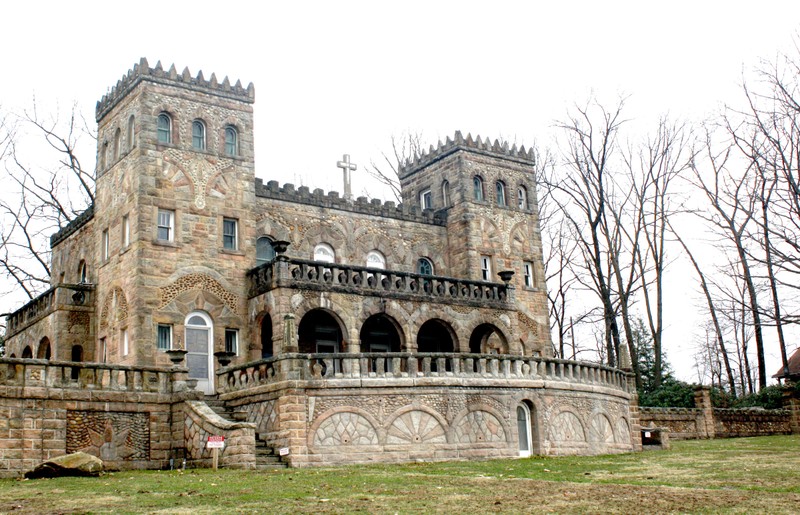
Backstory and Context
Text-to-speech Audio
Ferdinando Pitassi was born in Genoa, Italy in 1878. He learned the art of masonry from his grandfather before immigrating to the United States in 1896. The immigration office was unable to pronounce Pitassi’s last name, so he changed it to Pietro, meaning “stony” in Italian. Pietro began doing skilled stonework in Pittsburgh, PA, and married ca. 1899. It was also while working in Pittsburgh that Pietro acquired the first name, Thoney. One of Pietro’s bosses called all Italians Tony, so Pietro added a personal twist through the insertion of extra letters in the name. While on vacation with his wife in 1899, he briefly saw Morgantown from a boat and was moved by how closely it resembled his native Genoa. In 1911, Pietro moved his family to Morgantown and established a wildly successful contracting business, the Thoney Pietro Company.
By 1928, Pietro had amassed relatively great wealth and wanted to create a dream home for himself, his wife, and their daughter. He purchased a forty-acre lot and ordered construction to begin. However, Pietro had no official architectural designs for the home. He based it entirely from recollections of a castle in Italy and recreated it as closely as possible. Construction took five years, in part due to the Great Depression. It likely would have taken even longer, but Pietro paid his workers $2.40 an hour, over double a standard wage. The total cost of Pietro’s Castle was $200,000 – approximately $4 million adjusted for inflation.
Pietro’s Castle is primarily constructed of sandstone quarried from Deckers Creek. Befitting the abode of a master mason, the building features ornate designs in the carefully crafted stonework. In addition, Pietro wanted the castle to quite literally shine, so he had shards of glass and mirrors embedded in the concrete between sandstone blocks. The finished structure has over 3,700 feet of floor space and twenty-three rooms across the three floors. A grand stone patio and arched portico overlook the front lawn of the site. The building is sturdily boxy, with two square towers rising at each side of the front façade. This predominantly linear impression is offset by a profusion of arched windows and entryways, and through the slight curve of the patio. No expense was spared in decorating Pietro’s Castle. The interior featured custom mouldings, a wrought iron staircase, and an enormous marble fireplace that heated the entire structure. The grounds of the castle also featured swimming pools, a wine cellar, and a three-car garage, which is tastefully tucked out of site so as to not detract from the historic impression of the building.
In 1949, Pietro honored his personal commitment to Catholicism by deeding the castle to the Franciscan Friars. He hoped that the building would be used to train new priests for the ministry. However, the building sat abandoned while the Franciscans constructed a chapel in a different architectural style – much to Pietro’s outrage. In 1968, Pietro’s Castle was again occupied when Reverend Jude Mili began living there. Mili used Pietro’s Castle as a Catholic retreat, sheltering anyone who felt out of touch with God. Though this program was a personal success for Mili and those who came to stay, it never amounted to anything beyond an informal and unorganized social service. When Mili died in 2007, the castle was abandoned, and its future became uncertain.
Pietro’s Castle was purchased in 2012 by Cavalry Chapel, a local non-denominational church. At this point in time, the building’s interior was severely dilapidated and uninhabitable. The exterior, however, displays only slight weathering on parapets and railings and otherwise has suffered no major degradation. The church began renovations in 2014 to restore the building to working order. This ongoing restoration aims to update utilities and appliances while maintaining the original character of the building as much as possible. These days, Pietro’s Castle serves as a parsonage for Cavalry Chapel’s pastor and family. The church hopes to open the building up to the public for church services in the future. Pietro’s Castle remains an iconic landmark in Monongalia County.
Sources
The Castle, Cavalry Chapel. Accessed September 2nd 2020. https://ccmorgantown.com/about-us/property-history.
Exhibit: Thoney Pietro: A Morgantown Visionary. Morgantown History Museum News. 1 - 1.
Fuller, J Patrick. The Castle, August 4th 2010. Accessed September 2nd 2020. http://everipedia-storage.s3.amazonaws.com/NewlinkFiles/17042367/cbfe0___/fuller-doctor-j-patrick-the-castle-brevard-communi.pdf.
Gregory, Kathryn. For sale: one local, medieval fortress for a modern fortune, The Daily Athenaeum. April 21st 2008. Accessed September 2nd 2020. https://www.thedaonline.com/for-sale-one-local-medieval-fortress-for-a-modern-fortune/article_8d0dfab7-9cf9-5036-80b0-273c3024e70d.html.
Wright, Jesse. A Mysterious Morgantown Landmark Opens to the Public, WV Public Broadcasting. March 31st 2015. Accessed September 2nd 2020. https://www.wvpublic.org/post/mysterious-morgantown-landmark-opens-public#stream/0.
West Virginia & Regional History Center
West Virginia & Regional History Center
West Virginia & Regional History Center
West Virginia & Regional History Center
